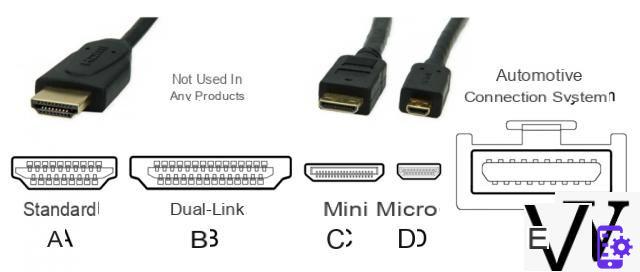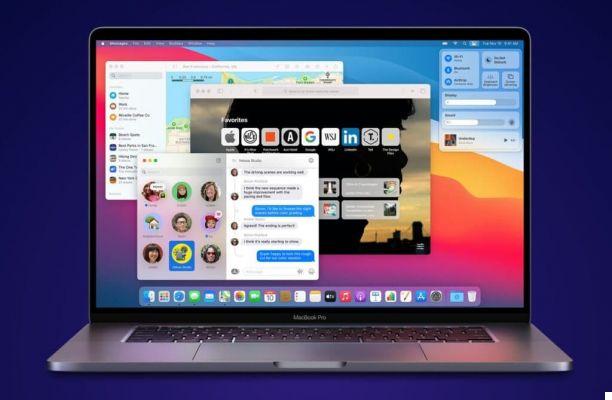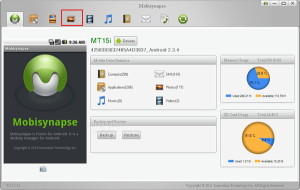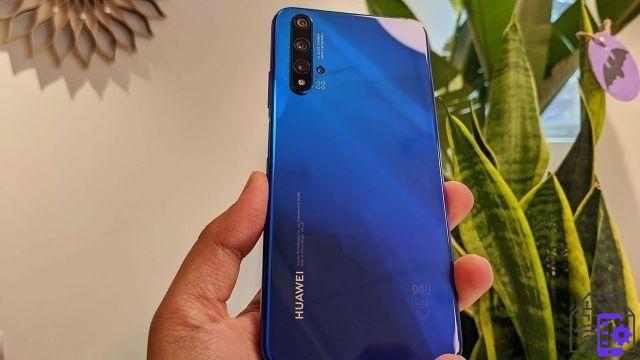
Here we go again with our guide to assembling a super custom PC! After reading all the episodes of the guide (which I leave you here a little lower), having put to good use months of prudent savings and having bought all the components (and I hope, you have chosen the most enlightened ones, ed), finally your computer it's ready! We press the button and… yes, it turns on !! Hey, wait a minute, it turns on but we haven't connected any monitors!
But like Japan, have you described every single component and forgot about the monitor? Absolutely not: today we discover how to choose a monitor that suits your needs.
ALL EPISODES:
Chapter 1: Guide to building your assembled PC: THE BASICS
Chapter 2: Guide to building your assembled PC: PROCESSOR AND HEAT SINK
Chapter 3: Guide to building your assembled PC: THE MOTHERBOARD
Chapter 4: Guide to building your assembled PC: RAM, HDD and SSD M.2
Chapter 5: Guide to building your assembled PC: THE VIDEO CARD
Chapter 6: Guide to building your assembled PC: THE POWER SUPPLY
Chapter 7: Guide to building your assembled PC: THE CASE
Why and how to choose the right monitor for your needs
On the monitor we see the images of our favorite videogames pass by, the homework or jobs we take home and sometimes even the slides of the glorious summer '82.
But what is the difference between a model from 100 € to one that can cost up to 10 times as much and above all I can steal the TV that was in my older brother's room now that he no longer lives here?
Let's say yes right away. He won't be happy when she no longer finds her in her place but yes.
If anything, the problem is another: what kind of expectations do we have from that old TV?
If for the moment you just need any source of images, or the use of your PC is purely business, then that 24 "inch could be quite good.
If, on the other hand, the game is your priority or if you carry out a profession strictly linked to this object, such as a photographer or videomaker, then the monitor you are looking for is a more performing model, and even if it will be very easy to spend € 300/400. , the difference with the old TV will surprise you and not a little!
The 3 discriminants that you will need to keep in mind when choosing your monitor are: size (16: 9 or widescreen is always in inches), resolution (although it would be better to talk about "image quality") e refresh rate (which you always find under the specification of "Hertz" or abbreviated "Hz").
Let's go and see these 3 areas immediately and let's understand the differences better together in practice!
Refresh rate. A matter of… speed!
We had already talked about it in the video cards article, but it's worth going back for a more general discussion.
The refresh rate is the amount of frames that your monitor can generate and show you on the screen. Hence, the first big difference with a simple TV.
Televisions, apart from a few rare and very expensive exceptions, are designed to reproduce films and TV shows which therefore do not require high performance and their image update remains only 60hz.
Of course, that's already 60 frames per second, not bad. Too many actually for cooking shows and certain talent shows, but what if I told you that not too professional monitors easily reach 100 Hz or more?
Seriously, a greater update corresponds on the one hand to a greater fluidity of the image, on the other hand a higher expenditure of resources for the computer (as well as economic).
However, if you are a small Fortnite champion, or Formula 1 has always been your favorite video game, you should aim for high refresh and response times under the fateful 5ms, often the prerogative of exactly these models.
Furthermore, if you have purchased an Nvidia or AMD card you can take advantage of some exclusive technologies such as FreeSync e G-Sync, technologies that many monitor models now integrate.
Dimension. A question of .. need!
Yes, because we often don't think about it, but a PC monitor takes up less space, even if it is flat and modern than a TV. First of all it does not contain the electronics of the digital terrestrial and then also the frames are considerably smaller. It follows that in the same space as a 24 "TV you can fit a 27" monitor, not bad right?
And then there's the aspect ratio issue.
At one time, both monitors and TVs were in 4: 3, now for the vast majority they are in 16: 9 (ie where the ratio between long side and short side is 16 to 9). However, if productivity is your priority, having a larger model than normal, which allows us to combine numerous windows and programs, can become more than a simple idea to cherish.
In fact, in recent years we have witnessed the proliferation of numerous 21: 9 said models ultrawide with inches from 25 to 34 ". And not only! To overcome the annoying black line that divides two 16: 9 monitors side by side, we now also have 32: 9 monitors of 49 "... 1 meter and 20cm of extra digital length for the most exorbitant and ambitious techno-madmen (like myself) .
Resolution. A question of .. quality!
At these longitudes it becomes inevitable to speak of resolution.
It goes without saying that a higher pixel density will correspond to a better image quality, but if you have already done a little tour on the net or in stores, you will surely have come across acronyms such as IPS, HDR and TN.
So let's say right away that they describe the same thing differently, that is the intrinsic quality of our panel.
Let's start with the models TN (Twisted Nematic) or the cheaper ones, characterized by good response times, but by viewing angles and limited color space coverage. They remain a good choice if the use will be mainly frontal and not really as a hardcore gamer, but let's focus for a moment on the issue of color space.
To define the quality of the image, its color and its luminance (i.e. the ratio between the brightness of the screen and the size of its surface), there are measurement scales that act as quality guarantees.
So we hear about sRGB or Adobe RGB, or two different color measurement meters that take into account many parameters such as gamma, contrast and brightness, classifying them with a percentage and thus defining their quality.
Therefore, if we want a coverage that approaches or exceeds 90% we must go up in quality and opt for a panel IPS (In Plane Switching), or monitors with better colors, as well as viewing angles, brightness and in any case good response times.
Then there are the VA (Vertical Alinement), which like OLED panels on TVs, have the peculiarity of reproducing blacks with off pixels and not black backlit, with the consequent advantage of having very high static contrasts.
Finally we have theHDR (High Dynamic Range), another parameter that concerns above all the relationship between brightness and contrast, where we have the ability of the panel to represent scenes where very bright portions coexist with other very dark ones with a reproduction fidelity extremely close to that of reality.
Ok, now that everything is clearer between the main technologies and differences, let's see some models divided by price range.
In this case we will not go to combine a monitor with the 4 price ranges already seen for PCs, (even if the more performing and resolute models, we will at least always have to combine a build with a dedicated video card), but we will simply see different models divided by ranges price, combinable with the configurations and needs already considered.
The FULL HD for amateurs of all ages
Here are two excellent Full HD models (1920x1080px), 24 and 27 "to begin with; these two monitors are already an excellent first step for both play and work.
The Samsung model integrates FreeSync technology perfect if you have chosen an AMD graphics card, while the Asus model has the excellent viewing angles typical of IPS panels.
[
THE ULTRA WIDE: for professionals but not only
As mentioned, these models make versatility and generous size their main characteristics and these 29 and 34 "models are two of the best models now on the market. Both 2560x1080px IPS panels integrate 75hz panels, HDR for 29 ”and FreeSync with 99% coverage of the sRGB space for both.
[
2K: the most coveted by gamers.
Here are the models most desired by those who play video games. Strange but true this category of person always prefers a greater fluidity (especially for games like shooter) to a very high resolution. This is how the compromise of QHD (2560x1440px) at 144hz represents by far the perfect type for our videogames.
Here are two models of 24 and 27 "to not miss a single frame on your virtual battlefields!
[
4K: cross and delight
Despite being the highest resolution on the market (but be careful because we are very close to the commercialization of 8K TV!), UHD (3840 x 2160px) is not really a type of monitor for gamers.
But if your budget is unlimited or your old aunt just accidentally put a zero too many on the wire transfer for your gift, I leave you two uncompromising 4K monitors.
The first is a 32 ”dedicated to productivity with advanced certifications and calibrations and the second simply the only model in the world that exists (no, I'm not kidding this time ...) to fall into this resolution with the famous 144hz refresh rate.
If you are an avid gamer, however, know that to manage a monstrous amount of information like this, you will need an equally monstrous computing capacity from your video card, with at least one RTX 2080ti.
[
Ok that's all for this episode too. I hope I have helped you understand how to choose the right monitor for your purpose.
I remind you once again that in the video cards article we have addressed in a more complete and exhaustive way the technologies and defects deriving from an imbalance between the monitor and the computing power of the computer, while in the next we will return to talking about PCs with all the other peripherals for play and work!
See you soon, mata ne!


























